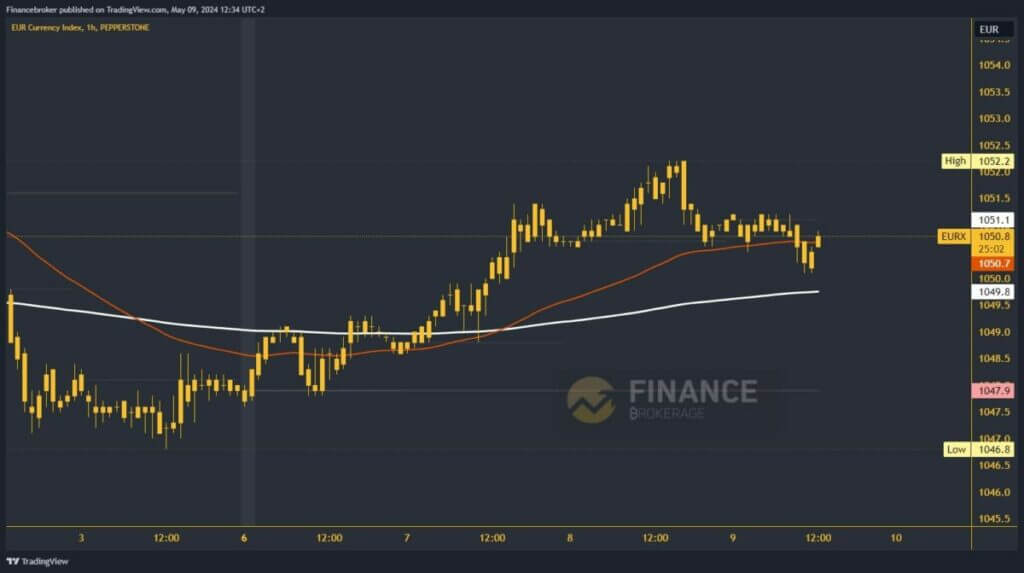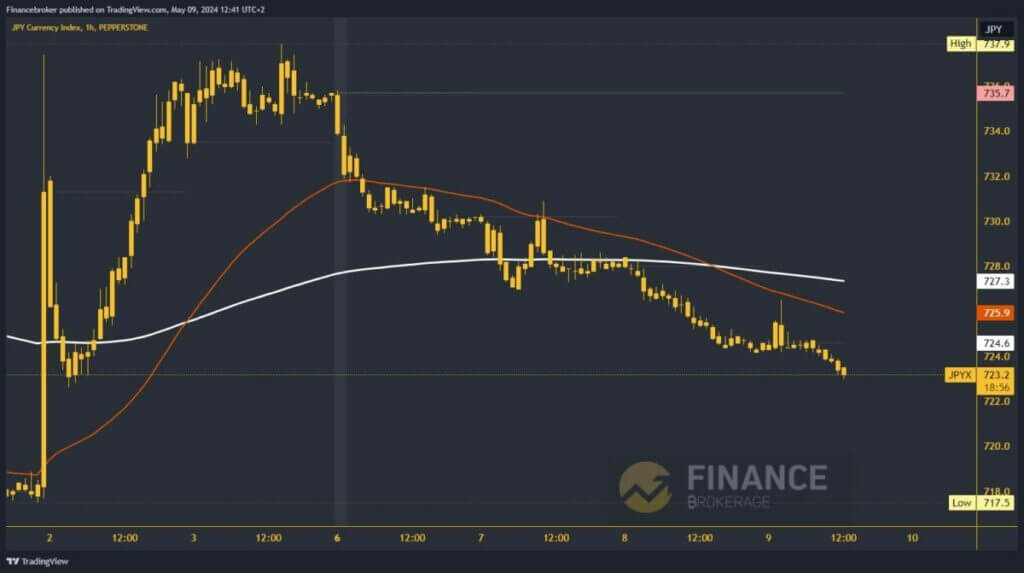
Euro Index and Yen Index: Yen remains under bearish pressure
- The euro index rose to 1052.2 levels yesterday.
- The yen index has been in a bearish trend since the beginning of this week, from 735.7 levels to the current price of 723.2.
Euro index chart analysis
The euro index rose to 1052.2 levels yesterday. We stop at that level and make a bearish impulse up to 1051.50. After that, the index starts consolidation in the 1050.50-1051.2 range. With the start of today’s EU session, the index is again under pressure and makes a daily low at the 1050.0 level. The EMA200 moving average is just below that, and we expect to gain its support and stay above it.
Potential higher targets are 1052.0 and 1052.5 levels. We need a negative consolidation and a drop to 1049.5 levels for a bearish option. Thus, we go below the EMA200, and there is an increase in bearish pressure on the euro index. Potential lower targets are 1049.0 and 1048.5 levels.
Yen index chart analysis
The yen index has been in a bearish trend since the beginning of this week, from 735.7 levels to the current price of 723.2. During this morning’s Asian trading session, we saw an attempt to hold above the 724.0 level. We didn’t succeed in that, and we started a withdrawal that continues even now. There is a good chance that we will go down to a new weekly low. Potential lower targets are 722.0 and 720.0 levels.
For a bullish option, we need a return above the 725.0 level. This brings us back to this morning’s movement zone. If we manage to hold on there, we will have a new bottom from which we could move to the bullish side. Potential higher targets are 726.0 and 728.0 levels. Additional resistance could be found in the EMA200 and the 728.0 zone.



